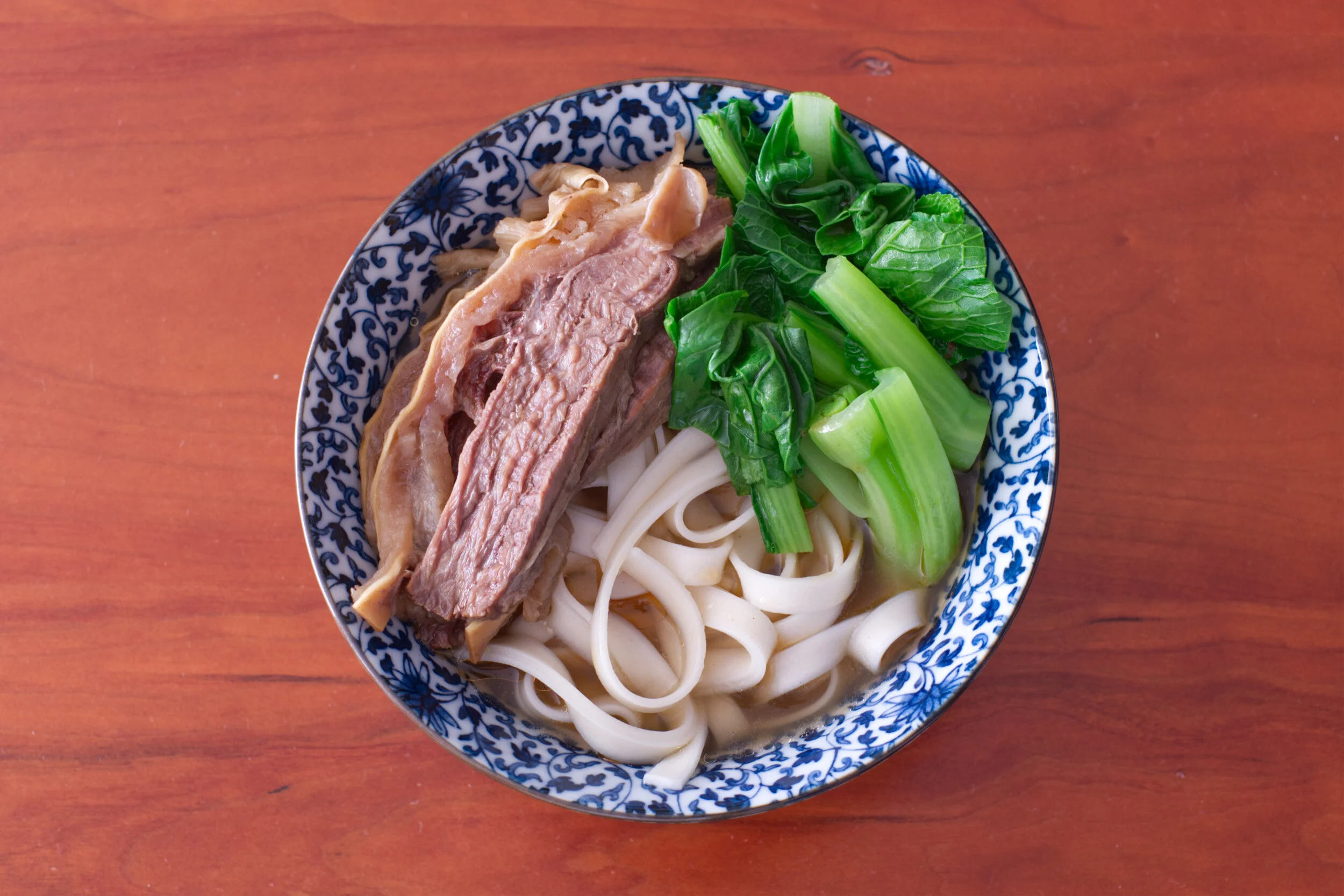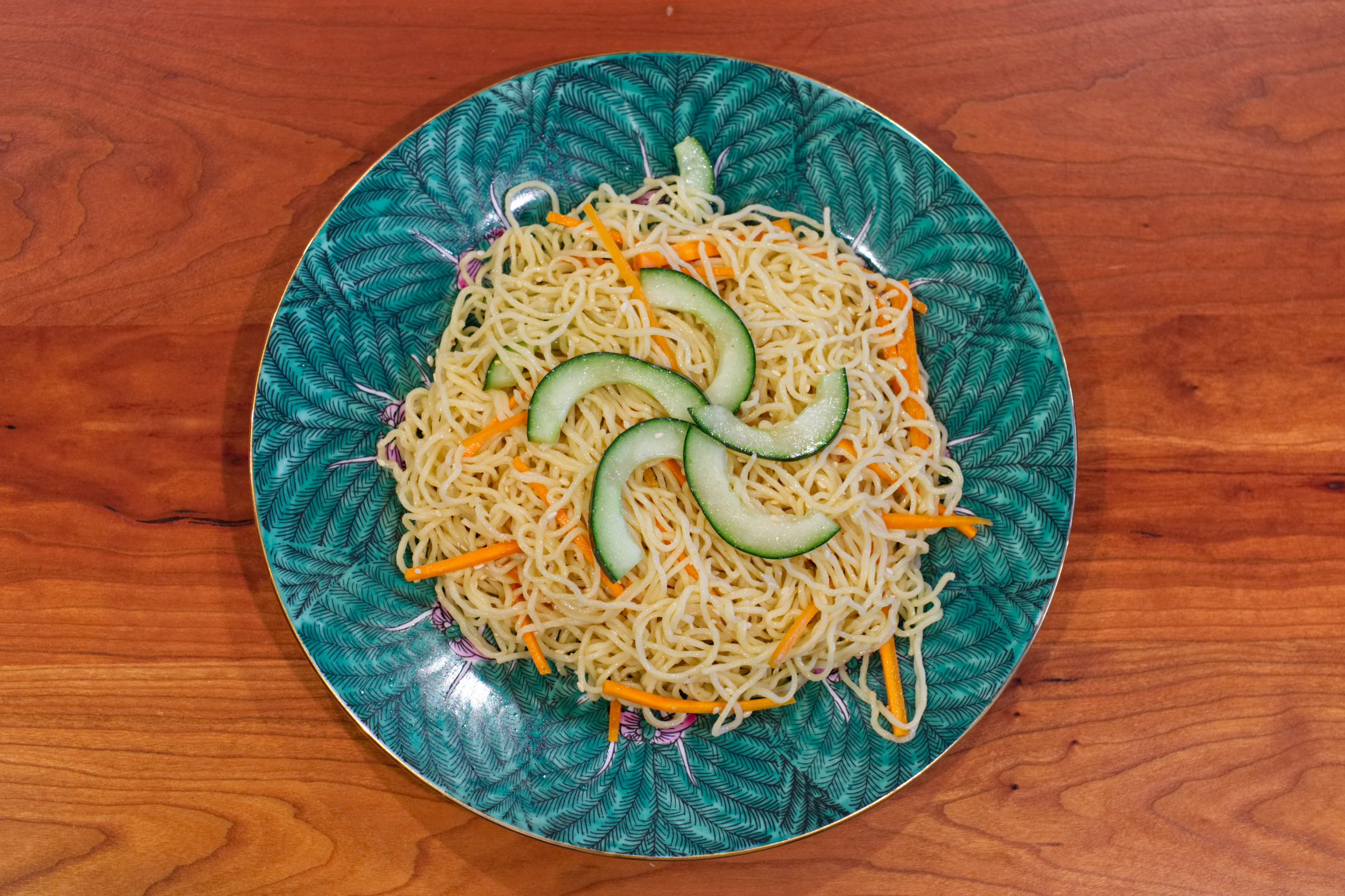Clear Broth Brisket Noodles 清汤牛腩面

Normally, I would take months of fine tuning a dish like this before making a post. It’s not because it’s hard to make or that it’s really fussy, but I mostly cook for myself and with a long braise or stew, it’s only worth doing in a large batch. If I make something like this, it could easily be part of a meal over the next five days as well as leftovers that can be frozen for another week. So I don’t get sick of a dish, I try to mix things up. Again, this is a great chance for me to just write something up that’s pretty tasty, but not perfect. It’s already about 80% of where I’d want it to be, so I’ll leave some notes at the end not just for myself, but if you want to refer to them and make adjustments for yourself too.
This recipe is technically similar to a lot of other East and Southeast Asian soups and stocks. I suspect the main technique behind this clear broth is so old that there’s probably no way of really determining which culture can claim ownership to this. I’ve seen this in many different Chinese, Korean, Japanese, and Vietnamese dishes. This is the same technique my mom taught me in making 炆牛腩 braised beef brisket and this is to make the sauce smoother and not grainy.
I have my own theory of why the origin story of pho is from the French pot-au-feu is probably wrong. Some draw the similarities of the two being a long simmered beef dish with lots of flavorful broth at the end. That vague description can fit many other dishes. In the context of when Vietnam was colonized by France, the origin story of pho always falls in this time frame. With the brutal nature of colonialism, it should raise some red flags when a colonized people’s cultural product can be credited to their colonizers. Besides this, there is a technical distinction of why I think the two dishes are different from each other and it all comes down to making the broth.
Look up any French chef’s instructions on how to make pot-au-feu or a white stock. I have reference and cookbooks from Escoffer, Jacques Pepin, Julia Child, Thomas Keller, Daniel Boulud, and Eric Ripert. When it comes to treating the meat, it follows the same core technique. Place the meat in a pot of water and bring it to a boil. As it comes to a boil and you start to see the impurities and foam rise up, skim it away. Reduce the heat, and skim any foam that appears over the course of cooking.
Looking at the technique of making pho or any other kind of clear broth from East or Southeast Asia, I see the common thread of following this technique. In a boiling pot of water, add your meat to it. Bring the water back to a boil and continue to boil to draw out the blood and impurities. Drain and rinse under cold water. Bring this back to a boil and reduce the heat to a simmer until done and skimming is optional. While the goal may be similar, the methods are very different.
Besides the technique of this, according to my mom, it shouldn’t be a heavily seasoned or spiced dish so the essence of beef should still shine through. One of the funniest parts was asking what kind of spices can be used and she’d only tell me two, before just saying and whatever else you want. Thankfully, I know of some other spices that can pair with beef and kept badgering her over the phone about how much to use. She has a sense for how to use them because her suggestions were pretty specific, but she’d repeat back to two principles. 1) Don’t over do it with spices. You should mostly taste beef in the broth. 2) Use whatever combination you want.
One of the other interesting things she told me was to leave the broth unsalted until the end. I remember learning how to make pho in the early aughts before the dish became trendy. So it was easier to find family recipes online and I remember a bunch of recipes that followed this, but they never explained why. At first, it might seem to reason that you never know how much water will evaporate so controlling the salt at the end would fix this problem. You can always just add more water so that’s not really the reason. This is one of these “true cooks” sort of knowledge. Adding salt too early in a long simmer affects the texture and makes the meat too stiff. I’ve mentioned this before in my 叉燒 cha siu post as it relates to over-marination.
For 清汤 clear broths, there is no soy sauce added to it. While it’s mostly for aesthetics, it also helps keep the broth more straight forward tasting as well.
The nice thing of making this is that it can be done in big batches. I like to make this a two days sort of cooking so I can remove the excess fat more easily. You can just scoop it out when it’s done and enjoy it right away. Just make these adaptations to fit your needs. I was in no rush to eat it when I made this. I took photos on the first day it was ready and today has been the second day of having this for lunch.
RECIPE:
2 lbs 牛腩 beef brisket (refer to this post about what this cut is actually like)
Neutral Oil
6 slices of ginger
4 cloves of garlic
2.5 qts water
2 tbsp rock sugar
4 star anise
4 slices of licorice root
1 black cardamom
10-12 Sichuan peppercorn
1 small stick of cinnamon
2 bay leaves
4 cloves
1 small piece of 陳皮 (aged tangerine peel)
Salt to taste
Rock sugar to taste
Chicken or beef bouillon to taste
Bring a large pot of water over high heat to a boil. Meanwhile, trim any excess fat off of the brisket. When the water comes to a boil, add 2 slices of ginger to it along with the brisket. Bring the water back to a boil and maintain this over a hard boil for 5 minutes.
Drain and with rinse the brisket under cold water. Use your hands to rub off any bits of coagulated blood.
Wash the pot clean and thoroughly dry.
Heat the pot over medium heat. When the pot is hot, add some neutral oil and add the ginger and garlic to it. Stir until it is fragrant and taking care that it doesn’t burn. (You can fry the spices briefly, but if you use a spice bag, you can skip this step out of convenience.)
Add 2.5 quarts of water to the pot. Add the brisket, spices, and 2 tbsp of rock sugar. Bring this back to a boil over medium-high heat and as soon as it boils, reduce to a simmer. Cover, but leave it barely cracked open to maintain a gentle simmer for 4 hours.
At the end, season to taste with salt, chicken or beef bouillon, and rock sugar to taste.
Remove the brisket and strain out the spices from the broth into a large container.
Place the brisket back in the broth and let it cool to room temperature. Place this in the fridge overnight so the fat congeals.
During the next day, scoop off the excess fat.
Remove the brisket and slice to whatever size you want. It is easier to slice meat when it has been chilled.
To serve, cook some noodles based on the instructions on the package, making sure to rinse under cold water to remove any extra starch. Place them in a bowl. Cook or prepare any vegetables that you like and put them in a bowl.
When you reheat the stock, add however much sliced brisket into the stock to be heated. Add to the bowl of prepped noodles and vegetables and enjoy.
Note: Like my mom said about the use of spices, she was right. While this is tasty, next time I’ll dial it down so I can taste more beef flavor.






